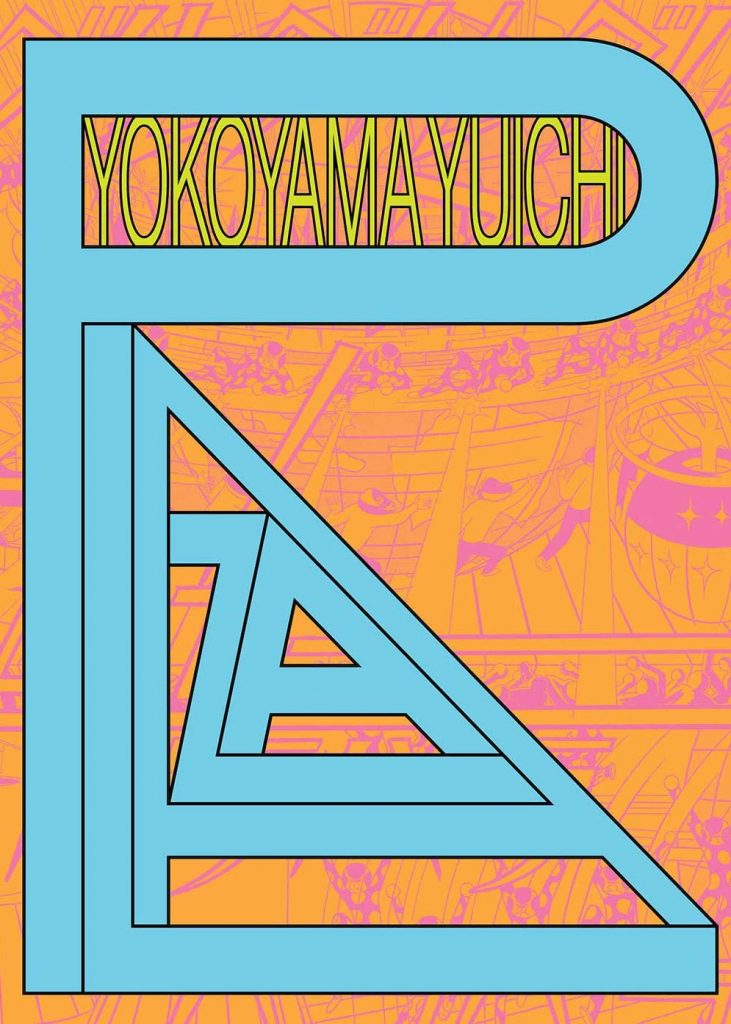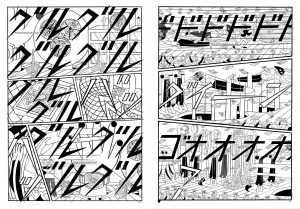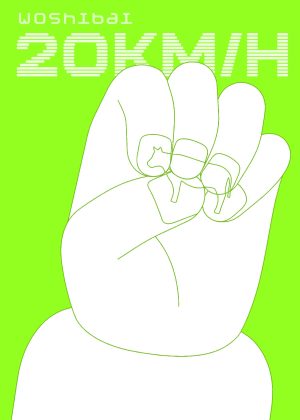Review by Woodrow Phoenix
In front of a crowd of enthusiastic spectators, a group of men on a raised conveyor belt extending hundreds of metres in each direction run past the viewers. As they go they unroll massive posters of people dressed in futuristic costumes and headgear like technical sportsmen, superheroes or ceremonial figures. There are many groups of these men, and after they have unrolled several of these massive posters, the parade begins. Over the next 220 pages we watch an endless number of people and constructions moving past us in a frenetic, energetic sequence of choreographed movement. People in all kinds of costumes, dance in and out of elaborate sets made of objects that expand, contract, slip inside out, change shape, and fly into the air, in a continuous celebration of just being alive, and all the stuff that people construct to help them live.
Plaza, by Yuichi Yokoyama is a large format, black and white softcover book. Its 208 x 292 mm surface area is needed to display the enormous unfolding extravaganza of this endless parade at an appropriate scale. Movement is essentially the only thing that this book is about. Inspired by the famous carnivals of Brazil, there is no conventional plot or story, just panels of massive, slightly abstract versions of everyday objects, blown up to enormous size and arranged in repeating rows of complex configurations. Like a combination of Claes Oldenburg and Bill Finger, the banal tools and everyday stuff of human existence becomes fantastical and celebratory in their new context. The continuous stream of excited people interacting with distorted and expanded items is fascinating at first, then a little wearing, then perhaps a little pointless but then completely fascinating again as we watch how Yokoyama takes all kinds of figures and symbols and reconfigures them. This becomes its own kind of entertainment as you wonder just what will run past your viewpoint next.
To enjoy Plaza you have to surrender to Yokoyama’s relentless, affectless treatment of imagery putting the emphasis not on meaning but on simply witnessing and experiencing. There’s an extra challenge to readers in the form of the huge spiky sound effects overlaying the art, which are of course in Japanese. They form a barrier that you have to look around and through to see the fine-lined, detailed and diagrammatic action underneath. Translated by Ryan Holmberg, this book includes Yokoyama’s longest interview to date and an afterword that gives some insight into his thought process. “What I try to do is represent things from the same perspective that animals watch humans from,” Yokoyama explains. “When a cat or a bird sees a person, it doesn’t think about whether it’s a man or a woman, or what kind of job they have. They just see them as humans moving around … That’s the kind of perspective I sometimes want to achieve. I think it’s more fair and equal. … It’s like a bird’s eye view of a human parade. But what’s going on is totally ridiculous … The idea [of Plaza] is to achieve that kind of detached perspective, by looking down at the scene from above. It’s really fun. It feels very impartial.”
If you’ve never read anything by Yokoyama before, then the more varied content of World Map Room or Garden will be more accessible than this hyper-intense challenge. Plaza is the next step in his ongoing attempts to force a different kind of visual logic into the rules that govern how comics work. “If reincarnation is a real thing … I would like to be reborn Brazilian.”







